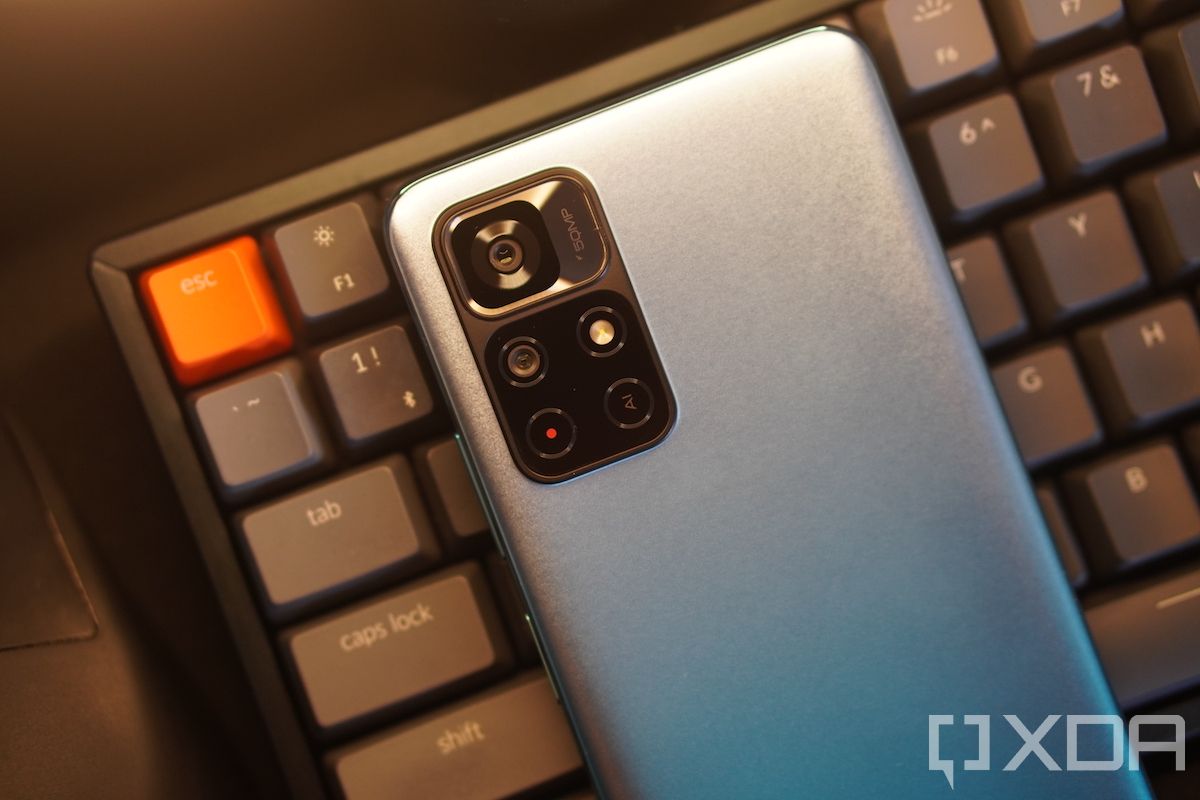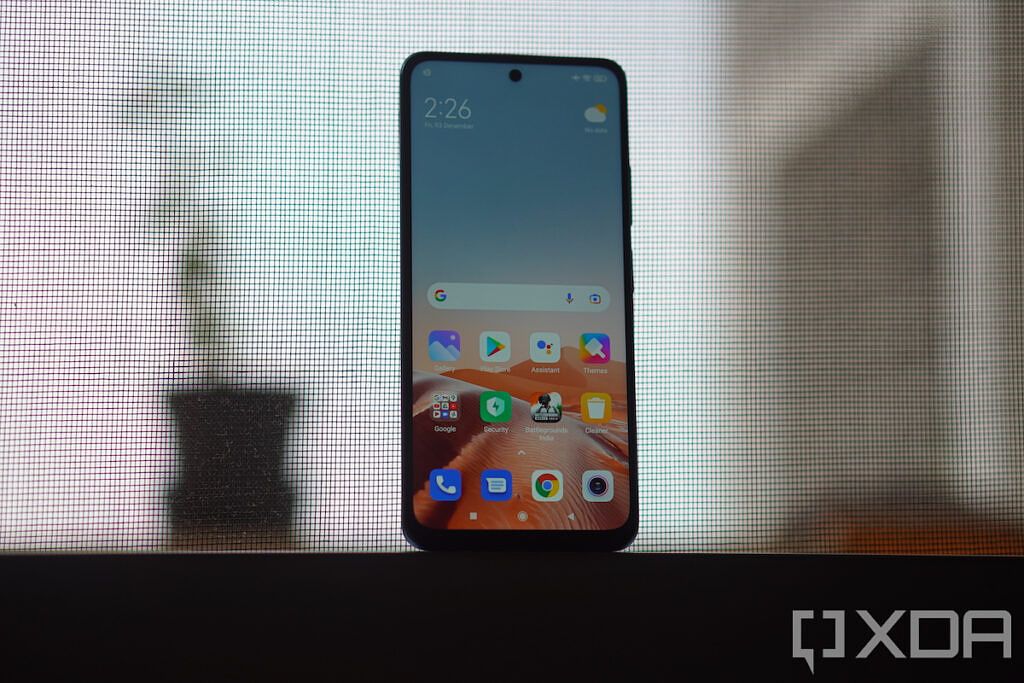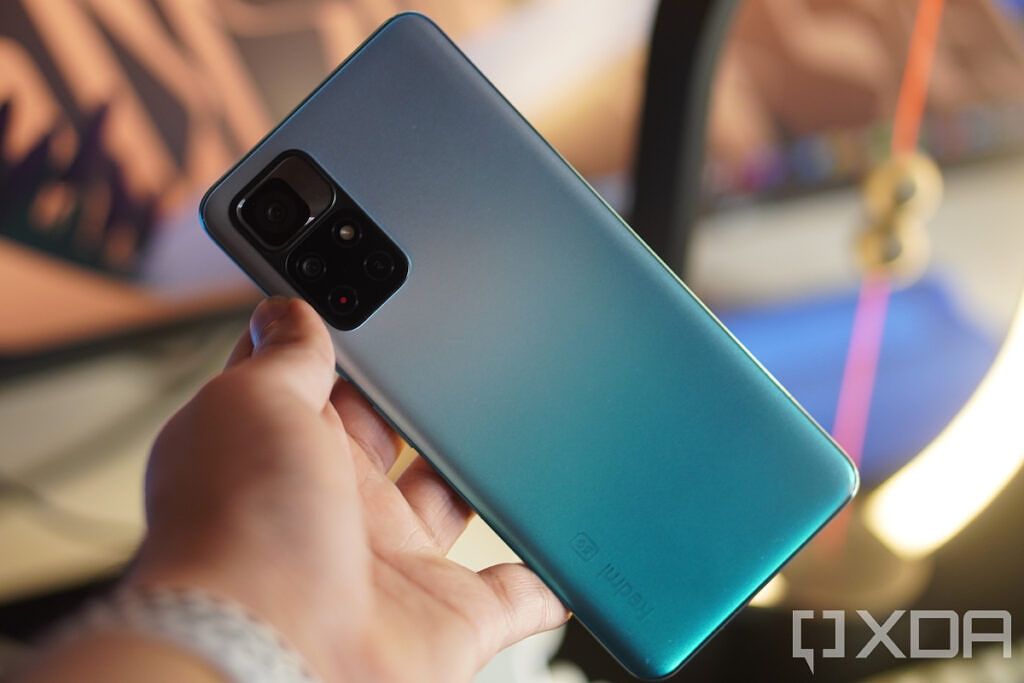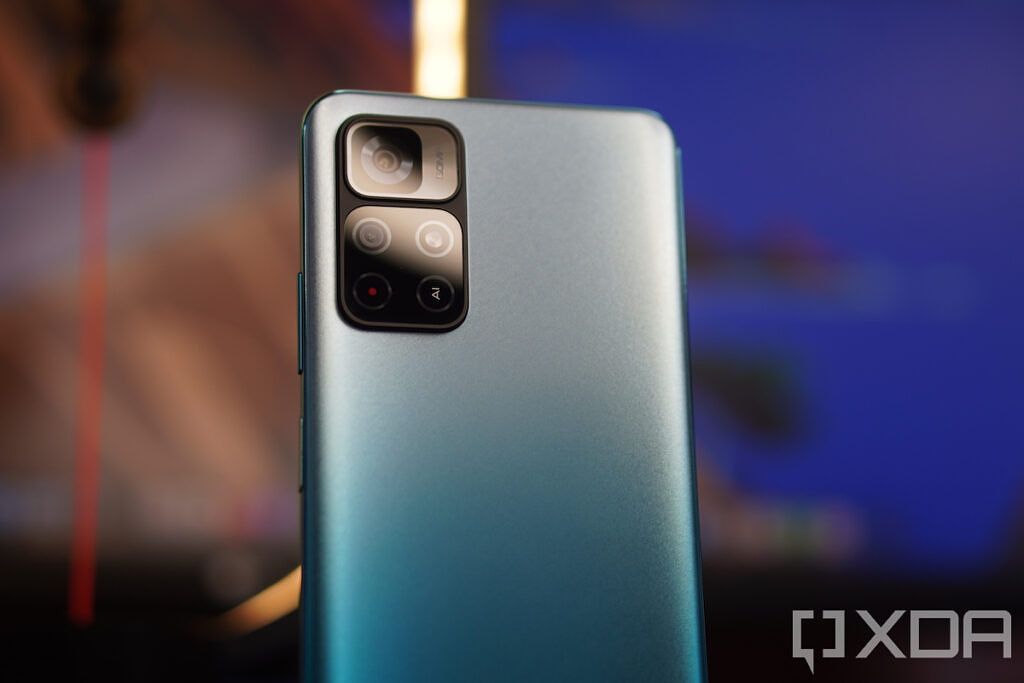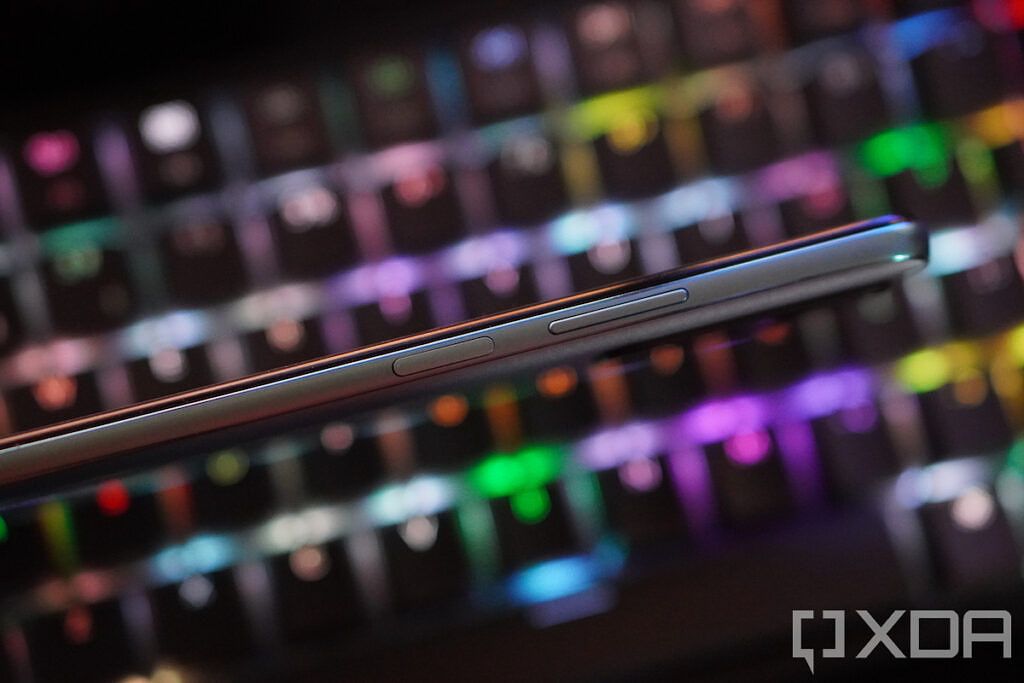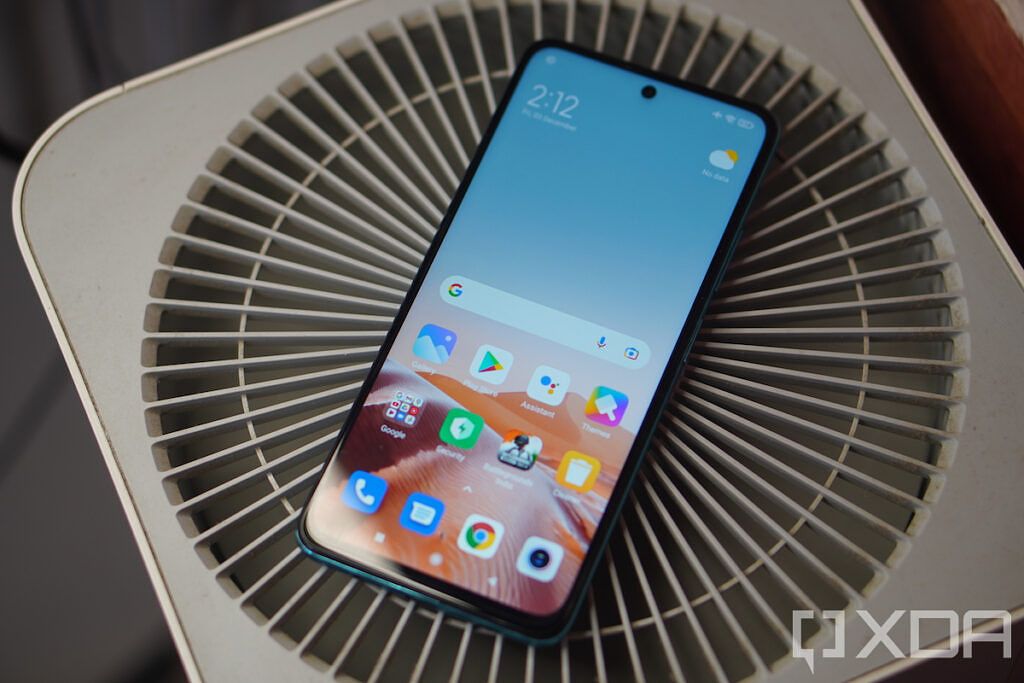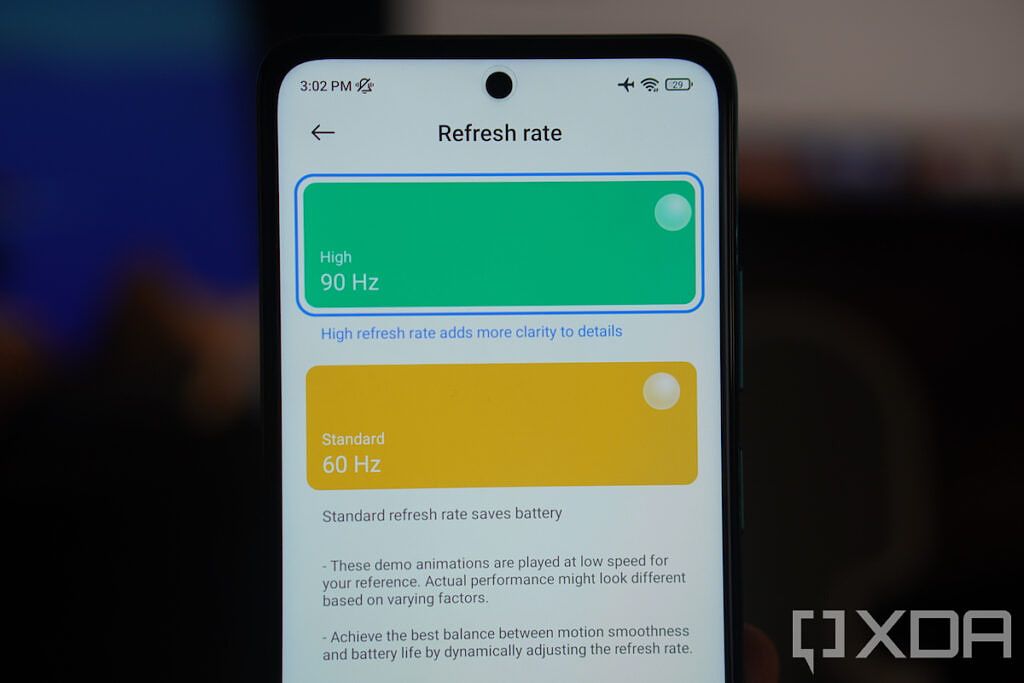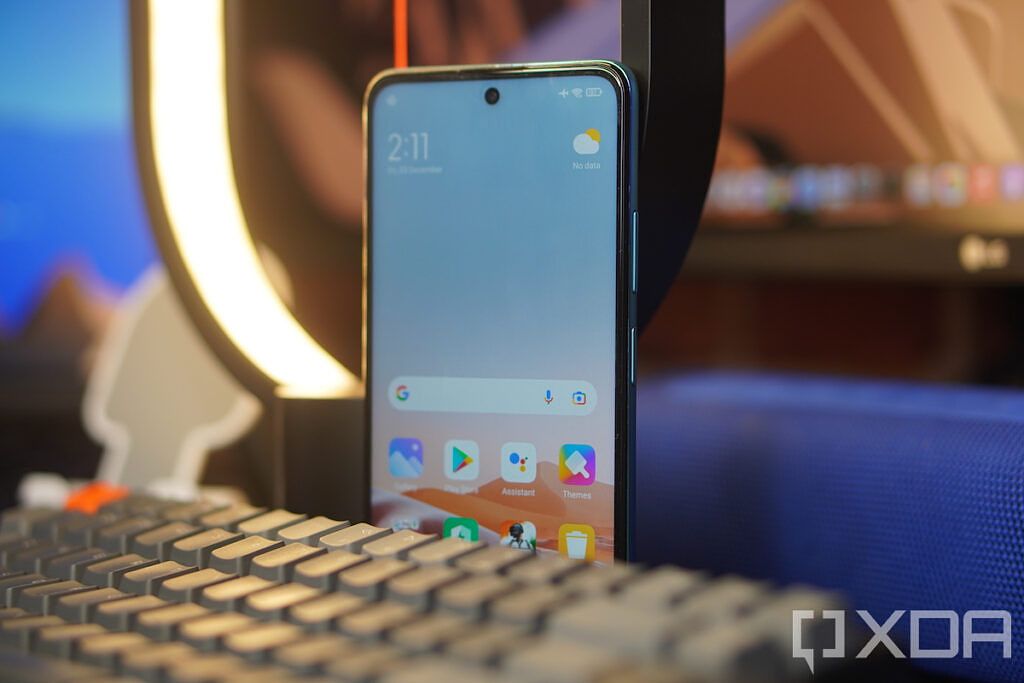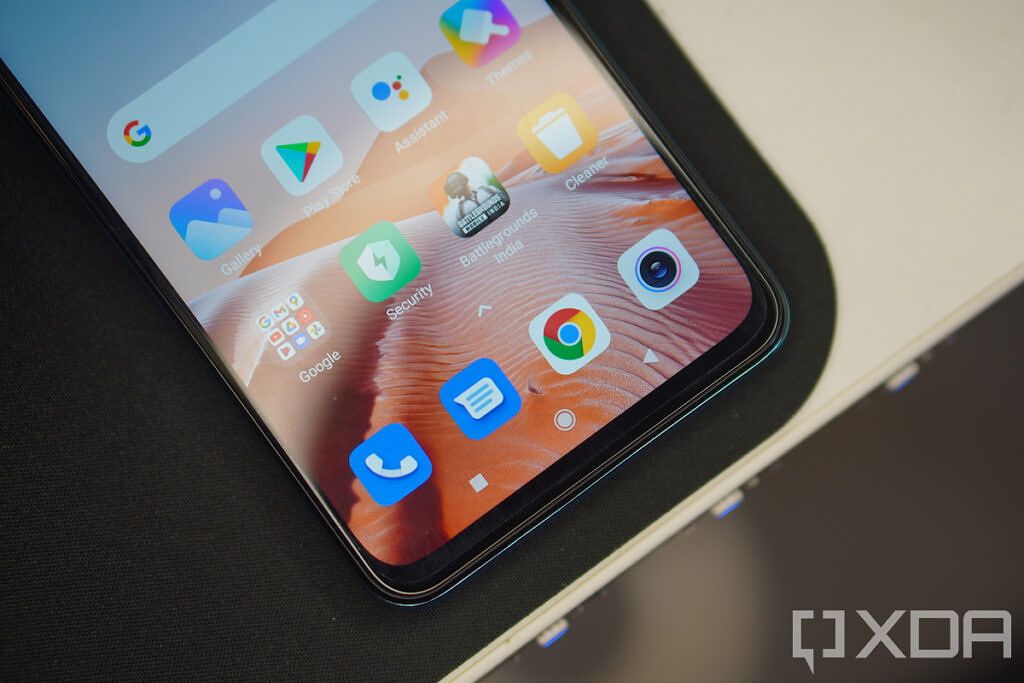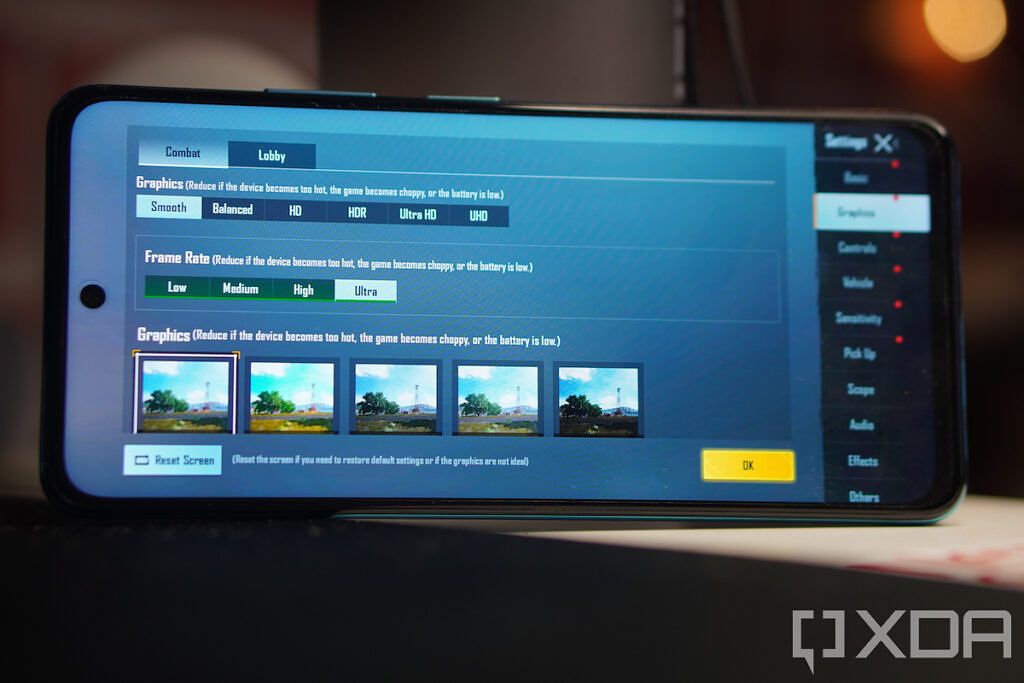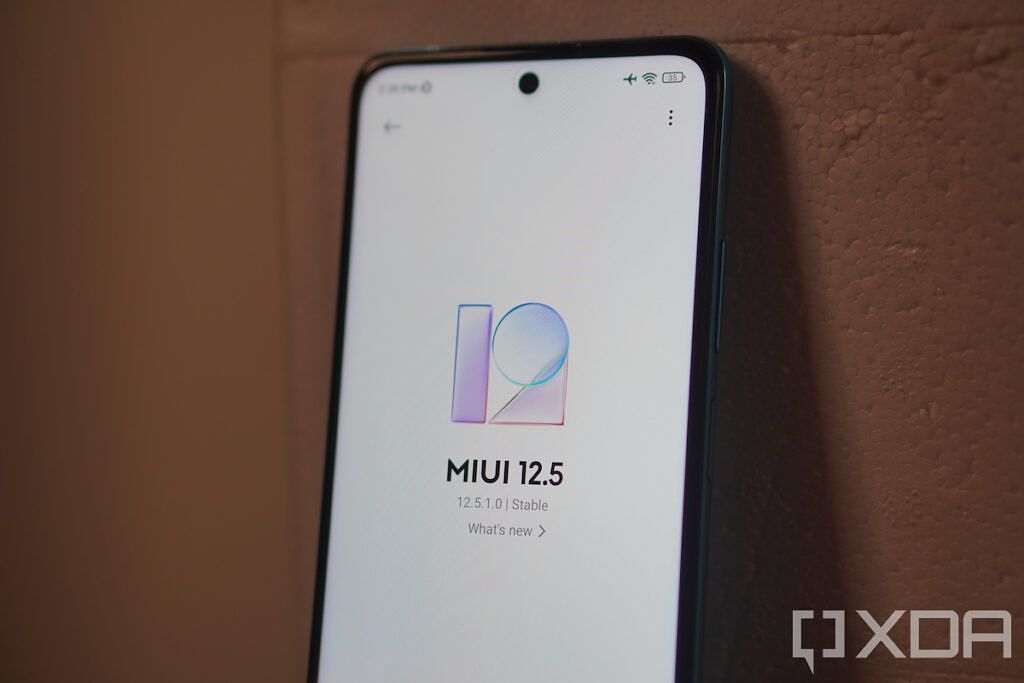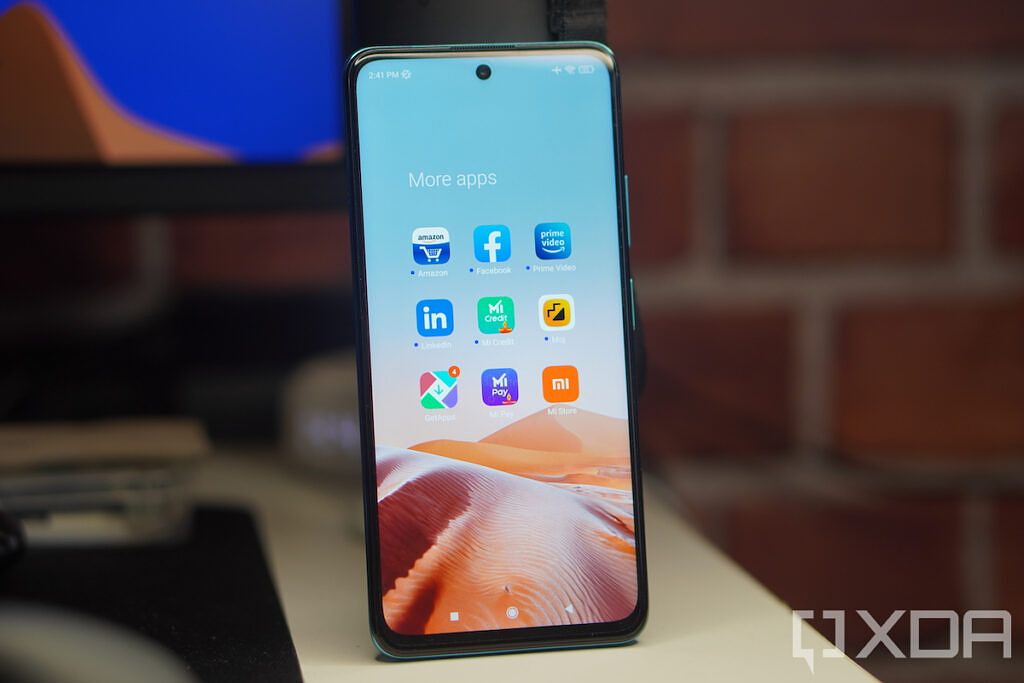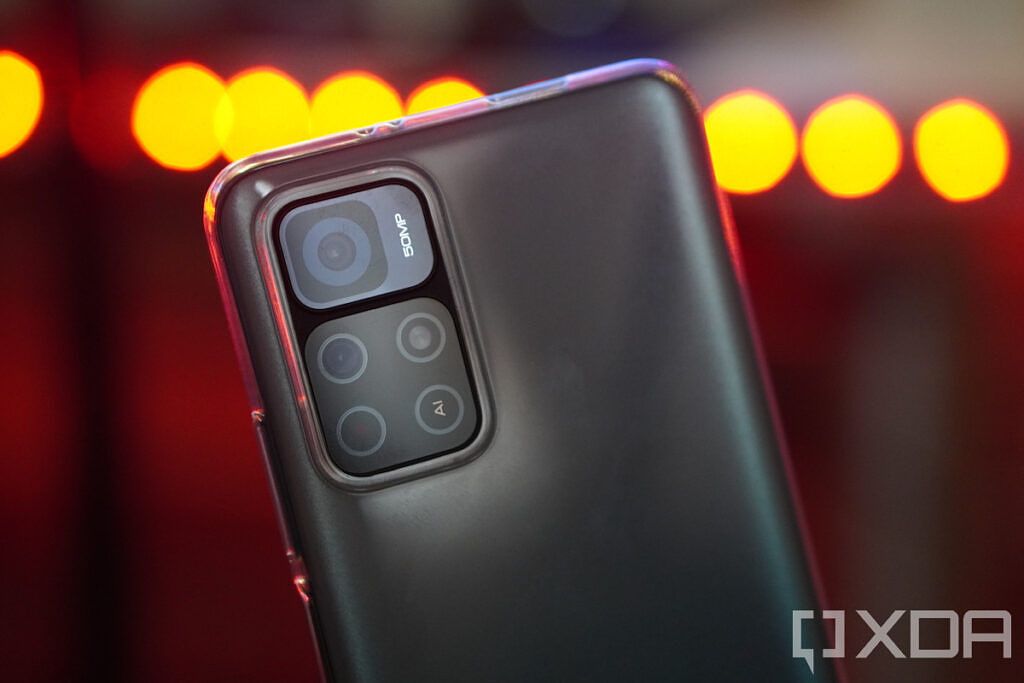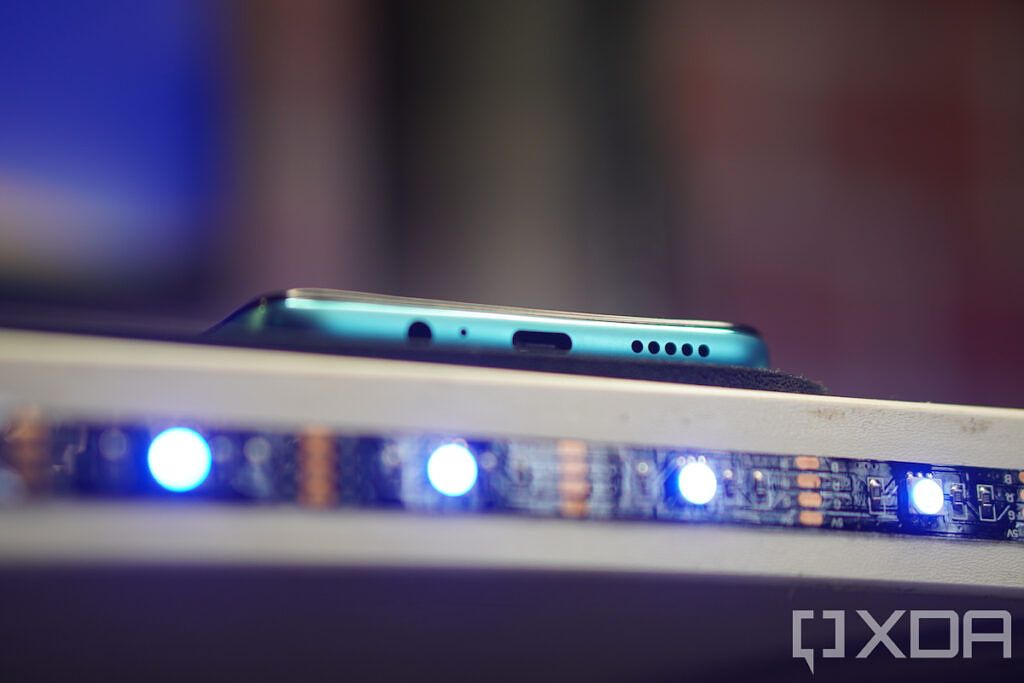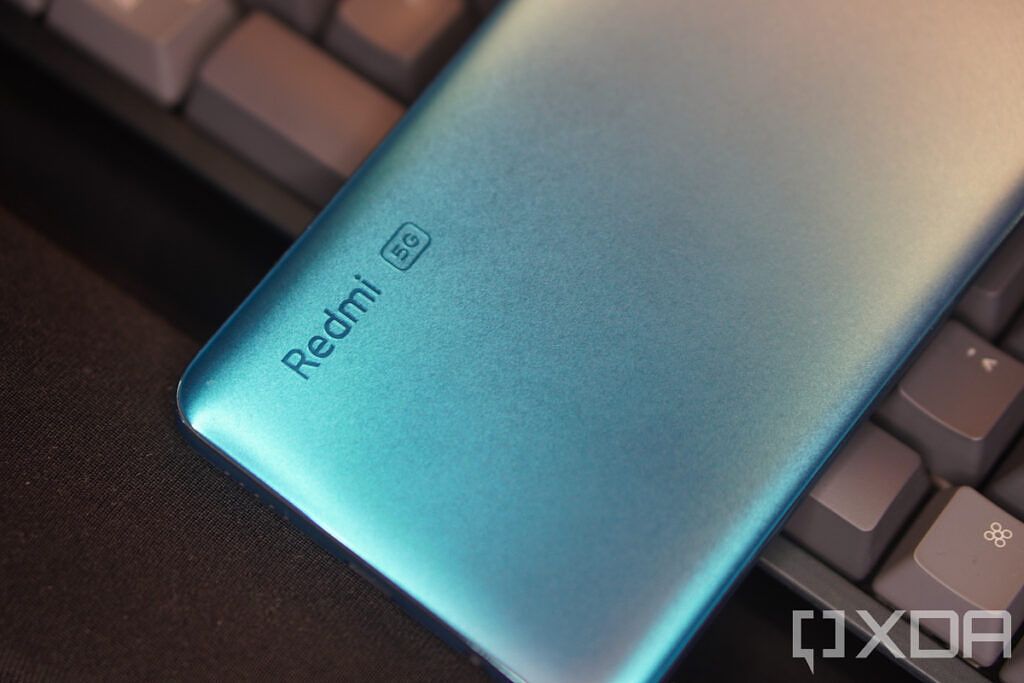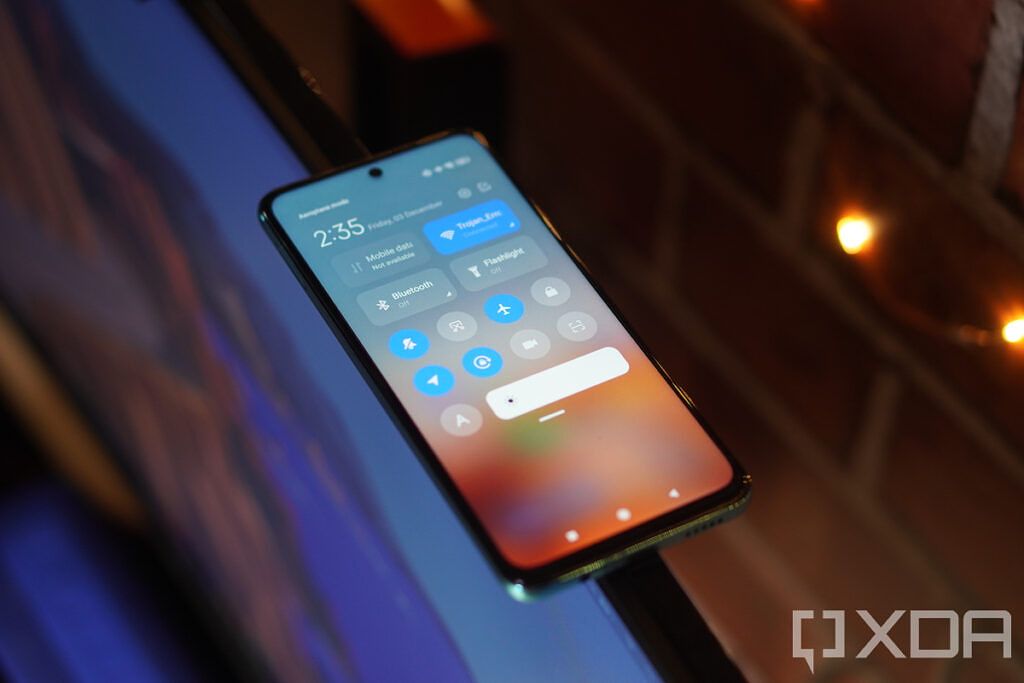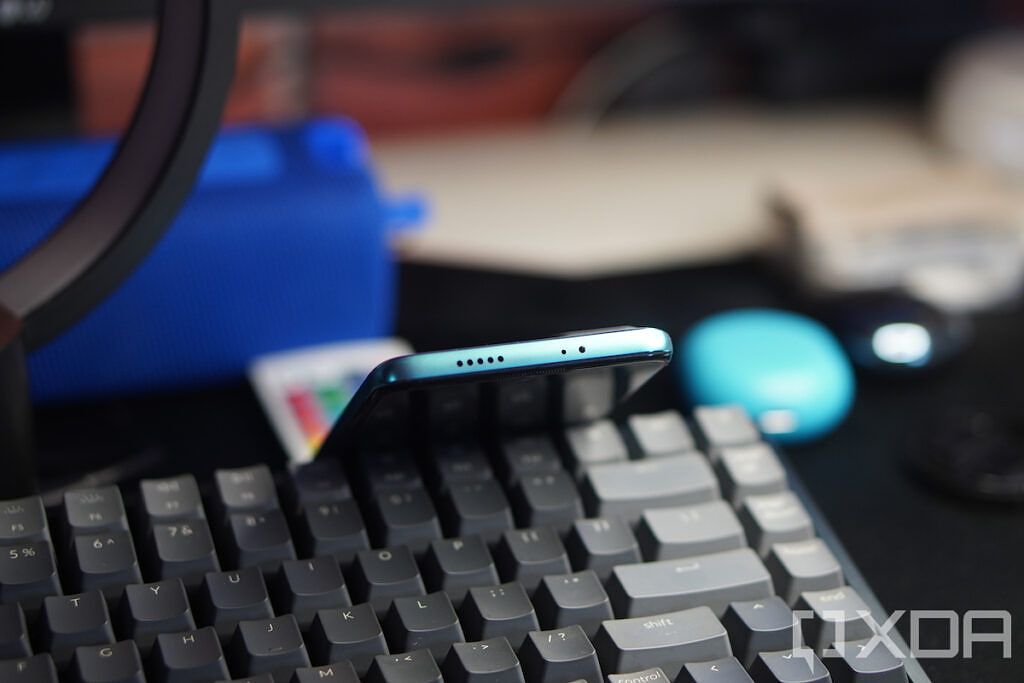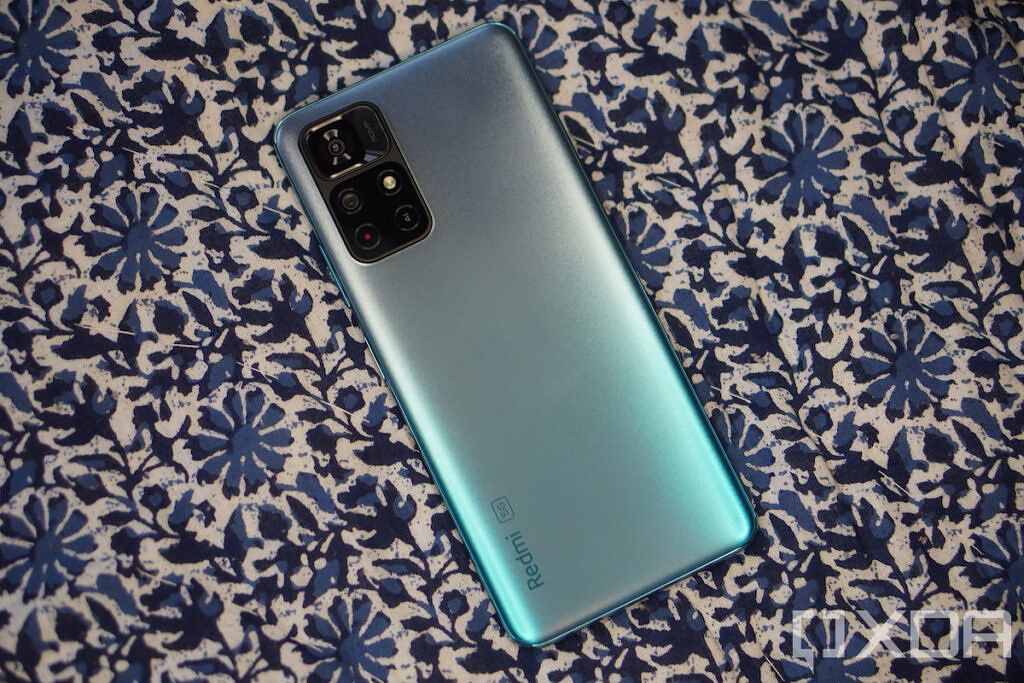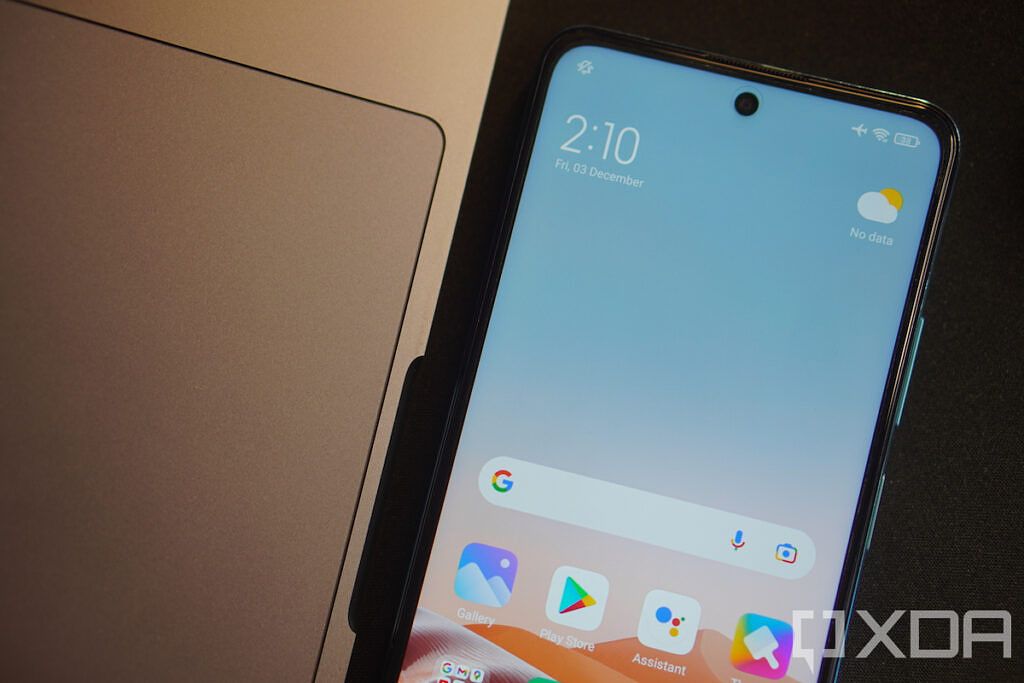Generally, I start reviews by building some context around the product in question. This time, I've decided to start off with the verdict. The Redmi Note 11T is a typical mid-range 5G phone from 2021. It's got a capable chipset with support for 5G, a large battery, a decent display, and an average set of cameras. This has been the story of just about every 5G phone in this segment so far. The fact is, the 5G tag brands are chasing after comes at a price, and this burden remains quite avoidable in India in 2021.
Given that 5G is still a relatively new technology, chipsets that have an integrated 5G modem aren't cheap. The worldwide chip shortage has just added to the misery. To accommodate the increase in the price of processors, brands have to cut corners elsewhere. This is why you see an LCD display instead of OLED, inferior cameras, and some other compromises here and there. If you still insist on buying a 5G phone in this price bracket, your best bet is to pick one up that makes the least compromises. The Redmi Note 11T is one of them. Let me tell you why.
About this review: Xiaomi India sent us the Redmi Note 11T 5G and the device was used for a period of one week before writing this review. The brand did not have any input into the contents of this review.
Redmi Note 11T 5G: Specifications
|
Specification |
Redmi Note 11T 5G |
|---|---|
|
Build |
Polycarbonate frame + back |
|
Dimensions & Weight |
|
|
Display |
|
|
SoC |
|
|
RAM & Storage |
|
|
Battery & Charging |
|
|
Security |
Side-mounted fingerprint scanner |
|
Rear Camera(s) |
|
|
Front Camera(s) |
16MP, f/2.5 |
|
Port(s) |
|
|
Audio |
|
|
Connectivity |
|
|
Software |
|
|
Other Features |
|
Build and Design
The Redmi Note 11T 5G looks similar to just about any other smartphone in this segment. It's got a polycarbonate frame and back with a matte texture. While I wouldn't say the brand has compromised on the way the phone looks and feels, the Redmi Note 10 Pro from earlier this year felt much better in the hand. The phone feels quite hefty and the back doesn't feel very premium.
It is IP53 rated though, so you should be fine with the occasional spill or splash. The rear camera module follows the same design language as the previous-gen Note devices. From a distance, the camera array appears to have four lenses. But upon close inspection, you'll realize that the phone only has two cameras and an LED flash. The two extra rings with a red dot and AI branding were unnecessary and are there just to give an illusion of a quad-camera setup.
Xiaomi has done a fantastic job with the side-mounted fingerprint scanner. It's blazing fast.
Where Xiaomi has done a fantastic job is the side-mounted fingerprint scanner. It's both blazing fast and reliable. Ten out of ten times, the phone would be unlocked by the time I took it out of my pocket. After taking it out of the pocket, though, I had to use the device with two hands every single time because of the sheer size of the display. Xiaomi includes a case in the box for protection and while it will protect the phone, the TPU material makes it quite slippery.
As mentioned earlier, 4G phones in this segment are generally built better or just feel better to hold and use. The Redmi Note 10 Pro was slimmer and lighter, and it had a glass back. The Realme 8 was compact and one-hand friendly.
Display
There's no denying that India is a spec-driven market. The word AMOLED on any phone's spec sheet automatically attracts more eyeballs than a phone that has an IPS LCD display. Brands also took notice of this and launched phones with AMOLED displays even in the sub-₹20k price bracket this year. The Redmi Note 10 series and the Realme 8 series both had OLED panels with Xiaomi going one step further by giving the Note 10 Pro and Pro Max a refresh rate of 120Hz.
Of course, with the price hike that comes with a 5G chipset, an OLED display is out of the question in this price band. This is why all 5G phones opt for an LCD display under the price of ₹20,000. The Redmi Note 11T also has an LCD display with a 90Hz refresh rate. The panel used is one with a variable refresh rate which means the display can go from 30Hz all the way up to 90Hz.
The smooth refresh rate surely improves the experience while scrolling through lists and social media feeds.
The smooth refresh rate surely improves the experience while scrolling through lists and social media feeds. However, at times, I did notice a slight stutter when scrolling quickly. This is something I've observed even in the past with some phones from Xiaomi having an LCD display with a variable refresh rate, namely the Mi 10i and the Poco X3. It isn't very frequent though and does not affect the overall experience of using the phone.
Refresh rate is just one of the important aspects of the display though. The most important one is the quality of the panel itself. Xiaomi has provided a good IPS LCD panel with a Full HD+ resolution. There's a punch hole in the center of the display for the selfie camera. The display gets adequately bright indoors but you may have some difficulty in comprehending what's on the screen under direct sunlight. Another thing that I personally appreciate is that the bezels around the display, especially on the chin are quite minimal.
This is one of the better display panels that you'll find on a mid-range 5G phone.
If you watch a lot of content on your smartphone, you will be satisfied with the display on the Redmi note 11T. Of course, it doesn't have the deep blacks and punchy colors of an OLED display but for what it's worth, movies and shows are surely enjoyable on this large screen. I would say this is one of the better display panels that you'll find on a mid-range 5G phone. If you want a better display that's brighter, shows better colors, and has a higher refresh rate in this segment, you'll have to give up on 5G as of now.
Performance and Software
Let's first get the specs out of the way. The Redmi Note 11T comes equipped with the 5G-enabled MediaTek Dimensity 810 SoC. This chipset is based on the 6nm manufacturing node which is impressive given the price point of the phone. None of this matters in real-life practical performance though. What's important is how the chipset performs and what kind of tasks it can do. Since this is a relatively new chipset, it makes sense to describe the capabilities of this chip relative to a chip that's popular and most people are familiar with. Going by that logic, the Dimensity 810 feels similar to the Snapdragon 750G both in terms of actual performance as well as benchmark scores.
That's actually great news for folks who seek raw performance. The Dimensity 810 is actually one of the most powerful chipsets in this price range and it's pretty evident when you use it. Apps open quickly, multitasking is smooth as ever, and even gaming on this device was a surprisingly good experience. For those interested, you can run BGMI on the Redmi Note 11T at Smooth + Ultra settings and I managed to get a constant frame rate of 40fps for the most part. There are slight lags here and there but that's common to all phones in this range. I also ran a CPU throttle test where the processor throttled to 80% of its max performance over 15 mins of max use and the temperature didn't exceed 50°C. Good stuff.
The Redmi Note 11T scores high in terms of performance.
There's no real way for me to test the 5G capabilities of the device since India doesn't have 5G networks yet (another reason to not consider 5G while buying a mid-range phone). The device has support for seven 5G bands though (n1, n3, n5, n8, n28, n40, n78) which seems promising. The Redmi Note 11T scores high in terms of performance. Everything just feels snappy especially when combined with that 90Hz refresh rate. This is undoubtedly the phone's strongest aspect which is what you're paying the extra premium for.
Needless to say, the Redmi Note 11T 5G runs Xiaomi's custom interface -- MIUI. You get MIUI 12.5 out of the box based on Android 11. For those of you who have used MIUI in the past, the experience is just the same on this phone. There are a bunch of useful features on MIUI like app lock, a second space, gaming mode, gestures, etc. It also comes with its own set of quirks though.
- For starters, there's some pre-installed bloatware that can thankfully be uninstalled.
- GetApps, Xiaomi's own app store sends plenty of unnecessary notifications.
- The default keyboard is Emoji Keyboard which I wouldn't trust. Gboard is disabled by default which I urge you to enable and set to default.
- While setting up the phone, Xiaomi ticks the checkbox next to the Facemoji terms and conditions by default. This is unnecessary and I would urge you to deselect it if you don't use the service.
- Xiaomi also pushes you to use Glance while setting up the phone, a lockscreen service that is known to display ads at times.
- Each time you install an app from the Play Store, there's a security check window that pops up by default. This can be disabled and is unnecessary since Google Play Protect already scans all apps on the Play Store.
Credit where due, Xiaomi has done away with ads in the UI. I also didn't encounter any sort of vulgar notifications that were a part of the MIUI earlier before the MIUI browser app was banned in the country. I personally like MIUI for the way it looks and all the useful features. If you're cautious while setting up the device and know what to uninstall/disable, you'll have a good experience without needing to jump through hoops.
Cameras
Every time a brand launched a phone with quad cameras where two of them were 2MP sensors to fill the spec sheet, there was one common request from us media folks -- just get rid of the two cameras that don't really serve a purpose and give us a pair of two good cameras. While Xiaomi heard the first half of the request, I'm not entirely sure they addressed the second half. The primary shooter on the Redmi Note 11T is a 50MP sensor that Xiaomi claims to have sourced from multiple vendors. Despite the high megapixel count, details in the images shot in daylight seem lacking. You can observe a bit of a watercolor effect when you zoom into certain parts of the images clicked by this phone.
While colors of objects like flowers and leaves look quite natural, the software seems to have processed the color of the sky in an unnatural way. It was a cloudy morning in Bengaluru when I clicked these shots but the sky was certainly not as gray as the images show. The same can be said about the 8MP ultra-wide camera too. Kudos to Xiaomi, though, for at least including an ultra-wide shooter since it's much more useful than a macro or a depth sensor. It's not very detailed though and shots appear rather dull. However, with good lighting and a photo editor, you should be able to get some usable shots.
I've certainly used phones with a much better camera setup in this price range.
When the light dips, the performance of the camera remains more or less similar. There's more loss of detail though especially at the corners. Night Mode does come in handy but a few times, the phone struggled to lock focus on a nearby object while using Night Mode. Shadows all tend to get crushed when there's not a lot of light. Overall, the rear cameras are usable. I've certainly used phones with a much better camera setup in this price range which brings me to the fact that this is another area where you have to settle for inferior hardware in favor of 5G.
The selfie camera seems pretty good though. it managed to do a good job with my skin tone as well as the exposure both in the background and on my face. Even with direct sunlight coming from behind, the frame was well-exposed and nothing was entirely blown out. Edge detection in Portrait Mode also seems on point. If you take a lot of selfies or make short-form content with the front-facing camera, you'll be pretty much satisfied with this phone.
In terms of video, the rear camera can shoot in up to 1080 60fps while the selfie camera maxes out at 1080p 30fps.
Battery Life and Charging
With moderate usage, you should be looking at about 7-8 hours of screen-on time with the Redmi Note 11T.
5G networks are known to consume more power than 4G which is why brands generally put in large batteries on 5G devices. With 5G networks not being available in the country yet, the extra battery certainly comes in handy as the endurance just gets better with 4G. The Redmi Note 11T's 5,000mAh battery had no issues getting through a day's use with social media, streaming videos, browsing, texting, and about an hour of video calls. If you play heavy games, the battery will naturally deplete faster. With moderate usage, you should be looking at about 7-8 hours of screen-on time with the Redmi Note 11T.
Even when you run out of charge, the 33W fast charger in the box will ensure that you don't have to stay without using your phone for too long. Another area where Xiaomi hasn't compromised like some other brands do with 5G phones in this segment. A full charge took me about an hour and twenty minutes which seems good for a 5,000mAh battery.
Miscellaneous Features
This is by far the best haptics that I've experienced on a phone in this price range.
When I said at the beginning that the Redmi note 11T is one of the mid-range 5G devices that made the least compromises, four major factors played a big role in making that statement. Two of those factors are good performance and fast charging. The other two belong to this segment. Firstly, the Redmi Note 11T has stereo speakers which improve your media consumption experience considerably. The main differentiating factor for me, though, was the haptics. This is by far the best haptics that I've experienced on a phone in this price range. It's the little things like these that matter.
Apart from that, the phone has a standard hybrid SIM tray, and a headphone jack if you still prefer wired audio. In typical Xiaomi fashion, there's an IR blaster up top that lets you control appliances like your TV or AC. The phone is also Widevine L1 certified, so HD playback is possible on Netflix and Prime Video.
Verdict: Should you buy the Redmi Note 11T?
Honestly, I was a little surprised that Redmi decided to debut the Note 11 series in India with the Redmi Note 11T. After all, a new Redmi Note launch is one of the biggest launches in India, so it would have made better sense to bring the successors of the Redmi Note 10 Pro and Note 10 Pro Max first since one expects them to be excellent devices. My point is that the Redmi Note 11T seems a little underwhelming to start a new series with since it's just like any other typical 5G phone in this segment.
However, it's got a few things going for it, making it one of the better options out there if 5G is an absolute necessity for you. The performance is excellent, it charges quickly, it has stereo speakers, and the haptic motor is the best in the segment. Of course, opting for a 4G phone will get you a much better display, improved cameras, and better design. It's up to you to decide what's more important to you.
Getting a 4G phone in late 2021 or even the beginning of 2022 still makes more sense.
I would say getting a 4G phone at the end of 2021 or even the beginning of 2022 still makes more sense. 5G isn't even available in India yet and there's no confirmed time frame either. Heck, the spectrum hasn't even been auctioned to telcos yet. Even when it finally arrives, 5G is going to be a lot more expensive than 4G and the availability is going to be limited to certain areas only. A country-wide adoption of 5G networks will require at least another 2 years, and more realistically 3-4 years which is still far, far away. You'll most probably get a new phone by then which will have 5G, that too at a lesser price since the tech would have been standardized by then.
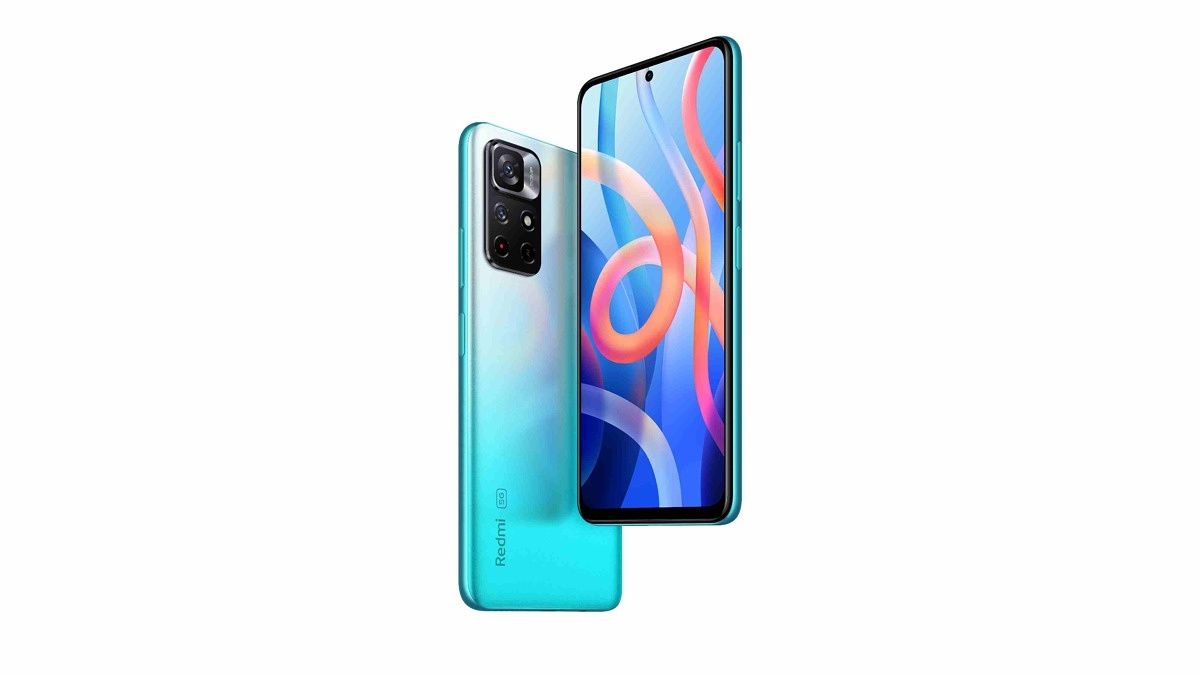
Redmi Note 11T 5G
The Redmi Note 11T is a 5G smartphone from Xiaomi in the mid-range segment. It's the first phone in India that belongs to the new Redmi note 11 series.
If you're in the market for a new mid-range smartphone, I would say wait it out till Xiaomi launches the standard Redmi Note 11 and its other variants. In case you want a phone right away, the Redmi Note 10 Pro is still a fantastic device and will give you a better package overall compared to the Redmi Note 11T. If you specifically want a 5G phone and are fine with all the shortcomings mentioned in this review, the Redmi Note 11T is one of the better options out there for you to consider. Even if it's only for the haptics.

